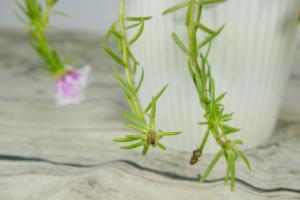How to Automatically Water Plants in Pots
Watering plants in pots can be an arduous task, especially if you have a large number of plants. However, with the help of technology, you can automate this task and ensure your plants stay healthy without regular manual watering. In this article, we will discuss how to automatically water plants in pots.
Step 1: Gather Your Supplies
The first step in automating your plant watering process is to gather all the necessary supplies. You will need a microcontroller such as Arduino or Raspberry Pi, sensors such as soil moisture sensors or water level sensors, pumps or solenoid valves, and tubing.
Step 2: Program Your Microcontroller
The next step is to program your microcontroller. You will need to write a program that reads the sensor data and activates the pump or solenoid valve when the soil moisture or water level is below a certain threshold. You can use programming languages such as C, C++, or Python to write your program. You can also use pre-built libraries and modules to make your programming task easier.
Step 3: Connect Your Sensors and Pumps
Once you have your program ready, you need to connect your sensors and pumps or solenoid valves to your microcontroller. This will usually involve connecting the sensors and pumps to the microcontroller's digital or analog pins. You may also need to use external power sources for your pumps or solenoid valves.
Step 4: Test Your System
Before you start using your automated watering system, you should test it to make sure everything is working correctly. You can do this by placing your soil moisture sensors in the pots and activating the system. If everything is working correctly, your sensors should detect low soil moisture levels and activate the pumps or solenoid valves to water your plants.
Step 5: Refine Your System
After testing your system, you may need to refine it based on your observations. For example, you may find that the watering frequency is too high or too low or that the amount of water being delivered is not enough. You can adjust your program parameters based on your observations and test again until you get the desired results.
Conclusion
Automating your plant watering process can save you a lot of time and effort, especially if you have a large number of plants. With the help of microcontrollers, sensors, and pumps or solenoid valves, you can ensure that your plants stay healthy without regular manual watering. By following the steps outlined above, you can create your own automated watering system and enjoy the benefits of automated plant care.

 how many times do yo...
how many times do yo... how many planted tre...
how many planted tre... how many pine trees ...
how many pine trees ... how many pecan trees...
how many pecan trees... how many plants comp...
how many plants comp... how many plants can ...
how many plants can ... how many plants and ...
how many plants and ... how many pepper plan...
how many pepper plan...































